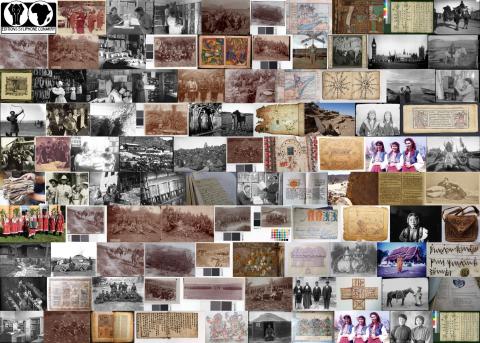Aims and objectives
The Sierra Leone Archives hold documents which can barely be equalled in importance for telling the Atlantic slavery story. Foremost are the Liberated African Letter Books, which record the slave ships captured by the navy patrol, list all Africans disembarked at Freetown and indicate what became of them. There are also treaties between local chiefs and the new settlement from 1788 to the 20th century and the 1790s journal of John Clarkson, brother of abolitionist Thomas Clarkson. This project will create an inventory and digital images of endangered documents.
The intention is to put into place a plan to digitise the Sierra Leone archives as part of a wider plan to assist Sierra Leone in the recovery and preservation of documents and materials both in Sierra Leone and abroad, that relate to the history of the country and the African diaspora origins of its population.
The rationale for this project arises from the importance of the Sierra Leone archives to the study of trans-Atlantic slavery and the terrible conditions of surviving documents following the Sierra Leone civil war. Particularly important are the letter books which record the slave ships captured by the navy patrol, list all Africans disembarked at Freetown including details of all their physical features, and indicates what became of them. This relates to approximately 80,000 people who became Africans in diaspora within Africa. These unique records include information on each individual. Documents in which enslaved Africans reveal their own names are extremely rare. In this case, the materials are even more important because they include information on age, gender, ethnic origin, and other details. They are indispensible in our understanding of trans-Atlantic slavery and the African diaspora, and it would be a further tragedy were they to be lost. This inventory will establish what has been done, what needs to be done, and what cannot be done because documents have been lost or too severely damaged.
Besides the Liberated African Letter Books, there are treaties between local chiefs and the new settlement after 1788 and extending into the 20th century, including the treaty by which the original land was secured; governors' dispatches; documents on land disputes; legislative council minutes; Aborigines Department letter books and birth and death records for the colony.
Settled in 1787 by the 'black poor' (mostly former slaves) from London, Sierra Leone received waves of immigration from around the Atlantic arena: African American ex-slaves who had fled to Nova Scotia; Jamaican Maroons who had been removed from Jamaica and initially settled in Nova Scotia; and most numerically significant, thousands of people who were liberated off slave ships after 1815 and were known as recaptives liberated by the Royal Navy and settled at Freetown. To these were added migrants from the hinterland, including Muslims from the north and north east, and local ethnic groups - Mende, Temne, Vai, Sherbro, etc. Sierra Leone became home to a unique polyglot Atlantic community. Its study is central to understanding slavery, abolition, race, meanings of freedom and political sovereignty throughout the region.
As a result of a long and brutal civil war, the infrastructure of Sierra Leone was virtually destroyed. This affected the archives, whose surviving documents are housed in temporary quarters. Many documents have substantial insect damage and suffer ongoing deterioration from heat and humidity: in a city where humidity is constantly around 90% and with no climate control facilities, these records cannot survive much longer without outside assistance. Most documents need rebinding urgently. Ultimately, digitisation is essential for the long term survival of the knowledge contained therein.
Documents are stored in temporary and insecure locations with little or no protection from the elements. They are now being moved to a more secure site on the University of Sierra Leone campus. The goal is to place the documents in a secure location pending the creation of an inventory and their digitisation. Because of local conditions, there were virtually no resources locally to fund this relocation, and certainly no resources to support preservation. The archives do not have internet connections, human resources or technical mechanisms to digitise the collection. This project will include the training of human resources and the development of appropriate technologies.
Outcomes
Various materials were surveyed in the Archives, including Liberated African Registers, Liberated African Letterbooks, Governor despatches, treaties between colonial officials and local chiefs, birth and death registers, and miscellaneous other materials, including John Clarkson’s journal of his journey from Nova Scotia to Freetown to settle the colony in the 1790s. The planning and preparation for a future major project was started, to digitise the most important and endangered of the archival documents. Sample volumes were copied from the Liberated African Registers, Letterbooks, and other documents. In addition, specific early documents, including Clarkson’s journal, were digitised at the request of the Chief Government Archivist. Digital copies of the materials that were copied are with the Public Archives, and copies were also deposited at the British Library, Harriet Tubman Institute at York University and at WISE, University of Hull.
The records copied by this project have been catalogued as:
- EAP284/1 Liberated African Department
- EAP284/2 Sierra Leone Register of Births
- EAP284/3 John Clarkson's Letterbook and Journal
- EAP284/4 Sierra Leone Treaties and Agreements
- EAP284/5 Sierra Leone Manuscript Orders



